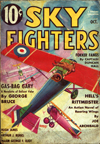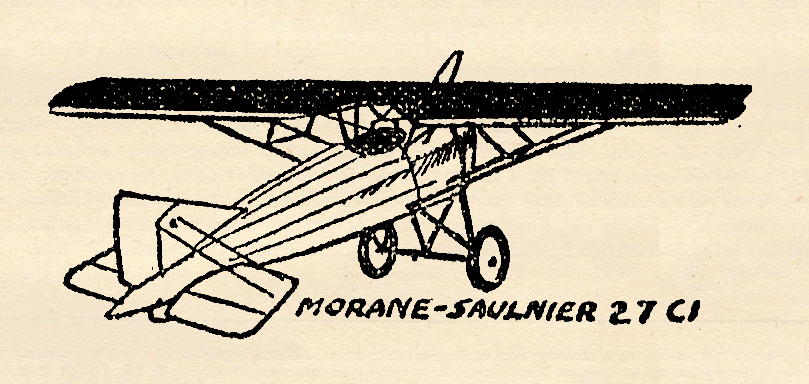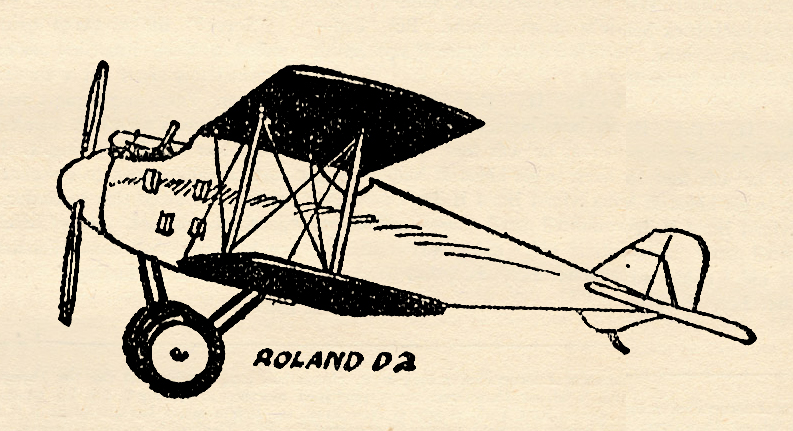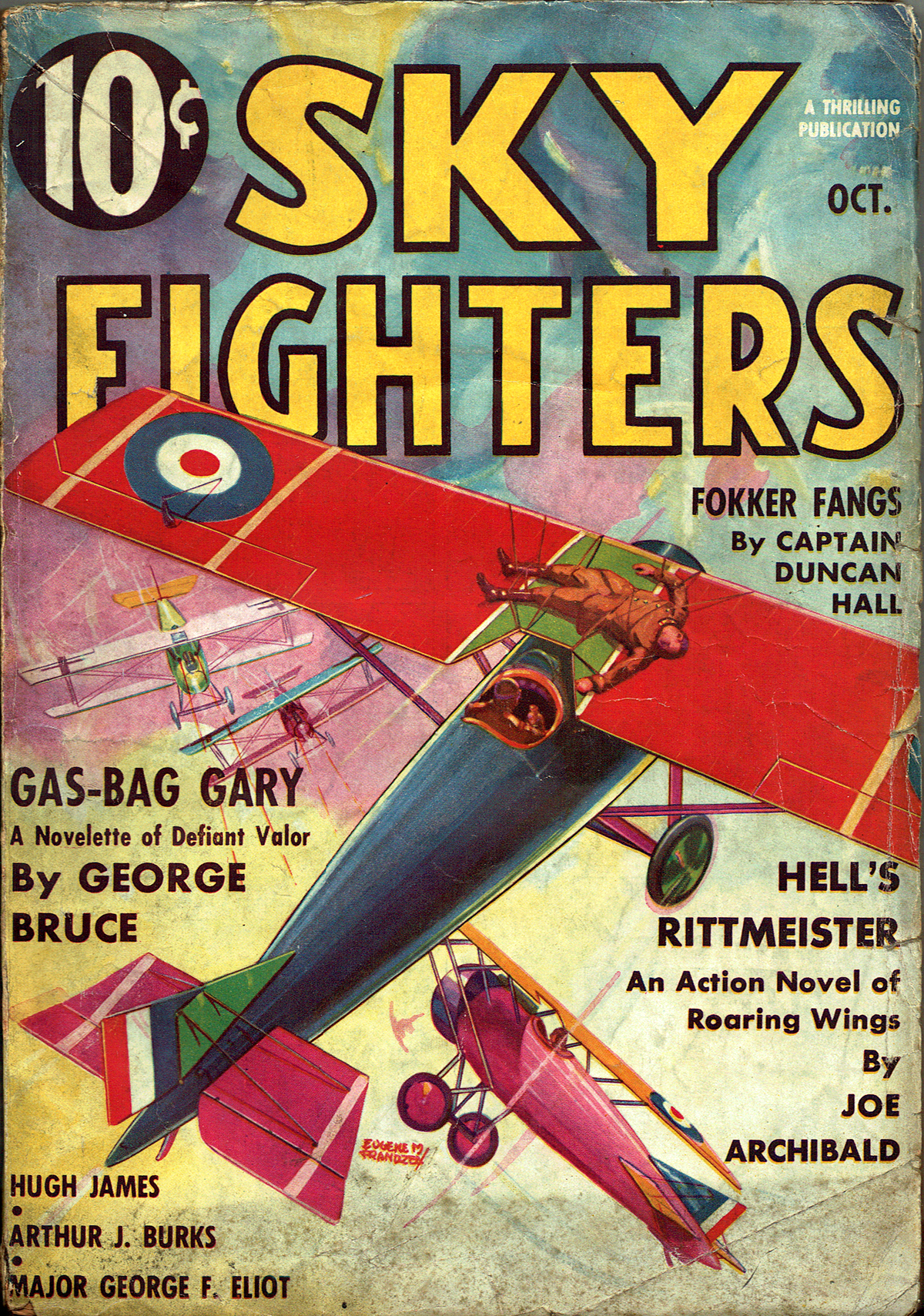AMIDST all the great pulp thrills and features in Sky Fighters, they ran a true story feature collected by Ace Williams wherein famous War Aces would tell actual true accounts of thrilling moments in their fighting lives! This time it’s the inimitable Italian flying ace, Lt. Luigi Olivari’s Most Thrilling Sky Fight!
Luigi Olivari was born in 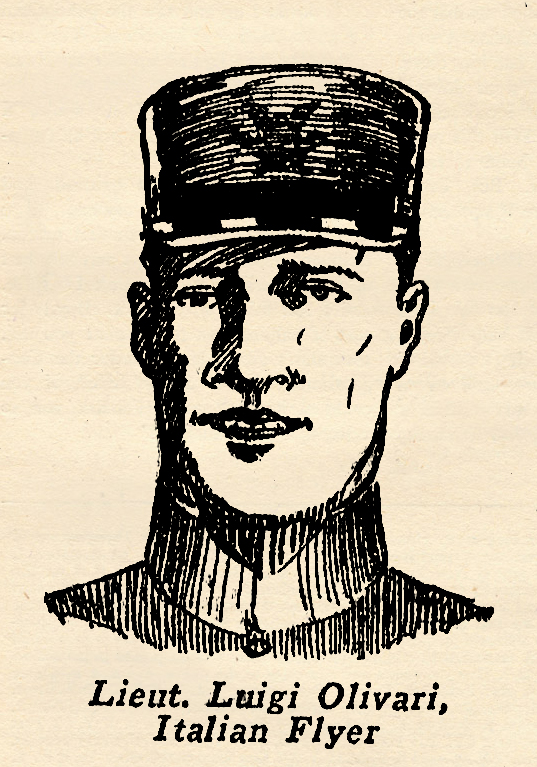 Milan and educated in Switzerland in a military school. Although but a boy in his minority when the war began, he left home and school immediately and enlisted in the ranks of the Italian Army. He rose swiftly in the ranks and was commissioned a Lieutenant in tho Alpine Corps, those rugged mountain troops that did so much to protect the fertile Italian plains from Austrian army raids. After brief service as an officer in that branch he was transferred to the flying corps. Sent to the front he was assigned to a squadron flying little Pomilio monoplanes with Fiat engines. These were the fastest but trickiest of front line lighting machines of their day. Luigi Olivari downed three Austrian planes in his first sky battle. When killed on October 15, 1917, he had run his score to 12 official and was the third ranking Italian ace. The account below is taken from an interview he gave to an American correspondent.
Milan and educated in Switzerland in a military school. Although but a boy in his minority when the war began, he left home and school immediately and enlisted in the ranks of the Italian Army. He rose swiftly in the ranks and was commissioned a Lieutenant in tho Alpine Corps, those rugged mountain troops that did so much to protect the fertile Italian plains from Austrian army raids. After brief service as an officer in that branch he was transferred to the flying corps. Sent to the front he was assigned to a squadron flying little Pomilio monoplanes with Fiat engines. These were the fastest but trickiest of front line lighting machines of their day. Luigi Olivari downed three Austrian planes in his first sky battle. When killed on October 15, 1917, he had run his score to 12 official and was the third ranking Italian ace. The account below is taken from an interview he gave to an American correspondent.
DOWNING A NIGHT RAIDER
by Lieutenant Luigi Olivari • Sky Fighters, October 1936
FIGHTING by day and fighting by night are not at all similar. Of course, one uses his guns in the same manner in both cases; but tactics and strategy are entirely different. In day time one maneuvers to secure the advantage of the sun, so that he may come down in the path of the sun’s rays unseen by his antagonist. To try the same tactics at night, say to maneuver into the path of the moon’s rays, would be fatal. For instead of being hidden you would only succeed in revealing your presence to the enemy. Then another thing, in day fighting one usually tries to gain position behind and above the enemy. In night fighters against bombers such a position is fatal. The glare of your exhausts gives your presence away, and the night bombers are so arranged that many guns can be brought to bear on the rear, in front and to all sides. The only proper way to attack is from directly beneath.
One has to unlearn most of his day fighting tactics when he goes on night patrol. I had had good schooling before I ever went on night patrol. That accounts, I believe, for my success in my first night flight, when I succeeded in bringing down an Austrian Gotha that was attempting to bomb one of our ammunition factories,
A Moonlit Night
Front line patrols had reported that a formation of three Gothas had crossed our lines, proceeding in the general direction of T——. The night was one of bright moonlight, ideal for bombing. And I must also say helpful to us, the flyers of the night patrol, who were supposed to keep them from laying their eggs—and down them if possible.
With Captain M——, Lieutenants S—— and G——, and Sergeant T——, I took off from our airdrome and flew to intercept the night raiders. Even in moonlight one cannot see far at night, hence the Gothas passed us unseen. They came over at a much higher level than they had been reported. It is only when the anti-aircraft battery protecting the factory at T—— began to fire at them, that our formation located them.
We all dashed in then with full power. Our instructions were to split the formation if possible. That we managed to do even before the night raiders had a chance to drop their bombs. Captain M—— and two others went for the Boche leader. Sergeant T—— and I then attacked the Boche on the right. The sergeant went up above and the Boche gunners opened up on him with a heavy fire which he returned. I could see the tracers from both ships racing back and forth like a streaking shuttle in power loom.
Firing at Close Range
Taking advantage of the Boche gunner’s momentary distraction with Sergeant T——, I dived down and came up with full power immediately beneath, my sights fastened on the Boche’s black belly. Knowing that they were armored in places beneath I waited until I was very close before firing. Then when I did, I rooked my stick fore and aft, so that my tracers traversed the whole length of the fuselage.
The Boche gunners saw me now, however, and they switched their fire to me. But their tracers went harmlessly through my outer wings. They couldn’t reach me in a vital spot, for parts of their own plane intervened. I was hovering under their blind spot.
With speed lost, my ship began to wobble. I had fired a whole belt of ammunition into the Boche’s belly and still nothing had happened. I thought my surprise attack from beneath was going to fail and was sick at heart. But no!
A little tongue of fire began to lick along the fuselage. Fanned by the air blast it leaped into a giant flame, the heat of which I felt against my cheeks as I fell off into an uncontrolled spin. Then there was an explosion. My own plane seemed to suddenly thrust sideways. It groaned under the sudden strain and the braces crackled.
But my motor was roaring, so I soon managed to regain control.
There below and to one side of me was a night raider falling in flames. The other two Gothas were streaking homewards with my comrades darting in at them and sniping from all sides like swallows attacking a hawk.
The bombs that were dropped did not do any damage, and I had succeeded in gaining my first victory over a night raider.
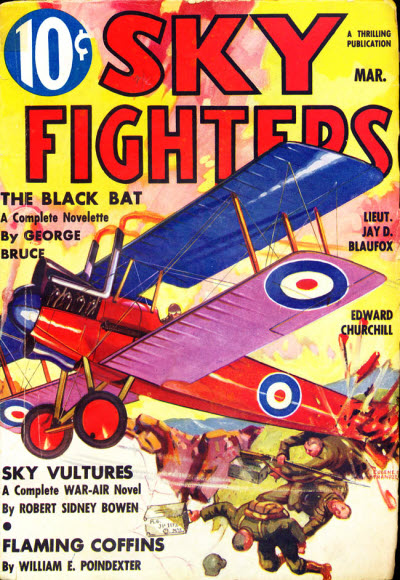 Silent Orth had made an enviable record, in the face of one of the worst beginnings—a beginning which had been so filled with boasting that his wingmates hadn’t been able to stand it. But Orth hadn’t thought of all his talk as boasting, because he had invariably made good on it. However, someone had brought home to him the fact that brave, efficient men were usually modest and really silent, and he had shut his mouth like a trap from that moment on.
Silent Orth had made an enviable record, in the face of one of the worst beginnings—a beginning which had been so filled with boasting that his wingmates hadn’t been able to stand it. But Orth hadn’t thought of all his talk as boasting, because he had invariably made good on it. However, someone had brought home to him the fact that brave, efficient men were usually modest and really silent, and he had shut his mouth like a trap from that moment on.




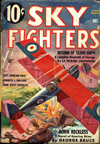



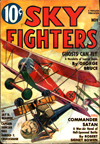



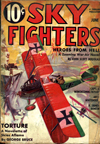











 Milan and educated in Switzerland in a military school. Although but a boy in his minority when the war began, he left home and school immediately and enlisted in the ranks of the Italian Army. He rose swiftly in the ranks and was commissioned a Lieutenant in tho Alpine Corps, those rugged mountain troops that did so much to protect the fertile Italian plains from Austrian army raids. After brief service as an officer in that branch he was transferred to the flying corps. Sent to the front he was assigned to a squadron flying little Pomilio monoplanes with Fiat engines. These were the fastest but trickiest of front line lighting machines of their day. Luigi Olivari downed three Austrian planes in his first sky battle. When killed on October 15, 1917, he had run his score to 12 official and was the third ranking Italian ace. The account below is taken from an interview he gave to an American correspondent.
Milan and educated in Switzerland in a military school. Although but a boy in his minority when the war began, he left home and school immediately and enlisted in the ranks of the Italian Army. He rose swiftly in the ranks and was commissioned a Lieutenant in tho Alpine Corps, those rugged mountain troops that did so much to protect the fertile Italian plains from Austrian army raids. After brief service as an officer in that branch he was transferred to the flying corps. Sent to the front he was assigned to a squadron flying little Pomilio monoplanes with Fiat engines. These were the fastest but trickiest of front line lighting machines of their day. Luigi Olivari downed three Austrian planes in his first sky battle. When killed on October 15, 1917, he had run his score to 12 official and was the third ranking Italian ace. The account below is taken from an interview he gave to an American correspondent.



